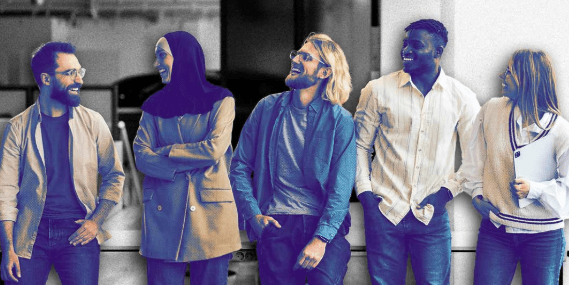By Islam Salah
Office attire in the Middle East has undergone a significant transformation in recent years. As global trends, generational shifts, and the region’s expanding business sectors intersect, professionals are finding new ways to dress that respect modern expectations and local traditions.
Here’s a look at how business attire is evolving in the Middle East while maintaining cultural respect and professionalism.
Traditional Business Attire in the Middle East
For years, formal business attire has been the standard in the Middle East, with tailored suits and conservative dress codes being essential.
Suits are typically in neutral colors like black, gray, and navy, which convey professionalism and authority. Neckties are common, though some conservative Muslims avoid wearing them, as they are seen as symbols of Western influence.
In some Gulf countries, men may opt for the traditional dress such as the thobe (a long white robe) paired with a head covering, like a ghutra.
Women’s attire is also modest, often involving tailored dresses, skirts, or pantsuits, with attention to covering the arms and legs while maintaining a professional look.
The Shift Toward More Casual Attire
The corporate landscape in the Middle East is changing, influenced by global trends, especially those from Western countries and industries like tech. Younger generations, particularly Gen Z, are pushing for a more relaxed dress code, with sneakers, T-shirts, and other casual attire becoming more common in meetings.
This shift reflects a growing preference for comfort and flexibility in the workplace. As businesses in the region embrace a “smart casual” approach, they are finding ways to balance comfort with professionalism, allowing employees to express their individuality while maintaining an image suitable for the workplace.
Maintaining Professionalism Amid Changing Trends
Certain industries, such as finance, law, and government, still stick to formal attire expectations, while more relaxed dress codes are seen in the creative and tech sectors.
Despite these shifts, professionalism remains important. Even as more casual dress codes become acceptable, maintaining a polished appearance is essential, especially in hierarchical workplaces.
The Role of Business Attire in Shaping Company Culture
The evolution of business attire also reflects changes in company culture. Relaxed dress codes help attract younger talent while upholding professional standards. Businesses are finding a balance that values comfort and professionalism, allowing employees to feel at ease without compromising their image.
It’s also important that dress codes remain inclusive and fair, accommodating all employees regardless of gender or background. By doing so, companies foster a culture of respect and professionalism.
Striking the Balance: Tradition Meets Modern Comfort
The evolution of office attire in the Middle East reflects broader changes in the region’s business landscape. Companies are finding ways to maintain professionalism while allowing for greater personal expression.
As the Middle East continues to modernize, it’s important for businesses to find the sweet spot where tradition and modern trends come together, creating a workplace that’s both professional and comfortable for everyone!
WE ALSO SAID: Don’t Miss…Improving The Psychology Of Employees: How Office Designs Can Promote Mental Health



